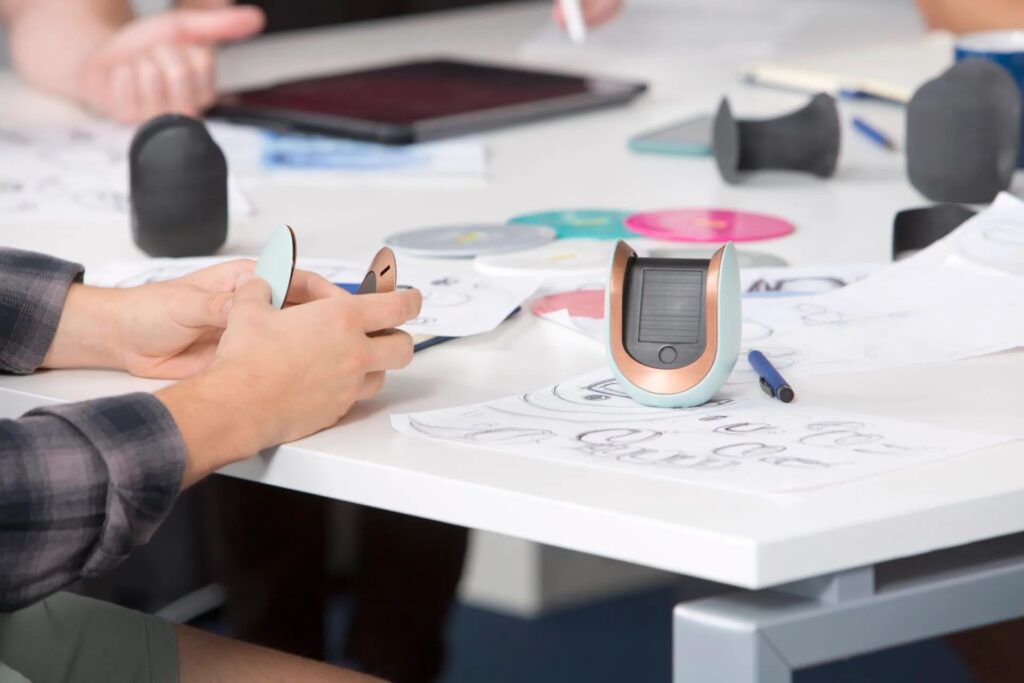& Construction

Integrated BIM tools, including Revit, AutoCAD, and Civil 3D
& Manufacturing

Professional CAD/CAM tools built on Inventor and AutoCAD
3 min read
When you start designing a product, what are your design process and design methodology? How do you know where to start?

Most design teams aim to produce “intentional products” — products that solve a particular problem for a particular target market in an intentional way. But to reach an intentional design requires a lot of behind-the-scenes work that the end customer doesn’t see; the process of designing products and the methodology controlling that process. The former defines the various steps and phases of solving a real-world problem by innovating solutions, while the latter specifies the way in which a team undertakes that process.
Many have tried to distill the process of design into a digestible recipe, often motivated by the hope of reliably reproducing successful innovation. At a high level, all of these formulas focus on solving a real-world problem that’s also a realizable market opportunity. One of the most notable strategies as of late is the design thinking process introduced by IDEO.

Design thinking aims to capture good intent by focusing on human interaction with a product. It begins by framing a question that inspires a design team to look for related concepts and generate new ideas. Prototyping brings these ideas to life quickly, and then testing the prototypes helps gather feedback. Teams then use human-centered feedback to develop and refine a product story until it resonates with the target audience. These steps aren’t linear, and they’re often iterated on and repeated forward and backward with the goal of an “intentional design.”
Design thinking is easily applicable to any kind of product ideation, but it should have specific users and relevant application environments in mind. For example, a wearable fitness device is naturally for a particular target group of athletes and needs to be tested in their actual sport in a variety of conditions and locations. The final product should resonate with any similar athlete to solve their specific problems while feeling familiar to use.
While the design process identifies a problem, produces a solution, and then develops that solution into a final product through iteration and testing, the design methodology provides a higher-level framework that controls how a team implements every one of these steps. Common design methodologies include waterfall, agile, spiral, and shape-up. Each sets forth a set of rules and best practices for a particular type of design team to navigate the design process in the most efficient and productive way possible.
Choosing the right design methodology is a highly subjective process. The right choice depends on the type of work, team size, physical proximity of the team members, and general preference in philosophy. For example, waterfall development is great for engineering construction projects where upfront specification is critical and execution moves forward in a nearly linear stepwise fashion. Shape-up development, on the other hand, works well for remote teams building UI-centric software products. Regardless of the chosen design methodology, strict adherence to the principles ensures that the result is a quality product with minimal wasted time or effort along the way.
Designing a quality product quickly becomes simpler when you separate the product design process from the design methodology. Design teams can implement tools like design thinking to guarantee that they pursue the right product. Then, following a methodology like agile or waterfall can guarantee that product development is efficient. You know what they say; “do the right thing and do it right.”
Are you ready to bring your product idea to life? Autodesk Fusion 360 helps you move through every stage in the product development process — no matter what design process or design methodology you choose.
By clicking subscribe, I agree to receive the Fusion newsletter and acknowledge the Autodesk Privacy Statement.
Success!
May we collect and use your data?
Learn more about the Third Party Services we use and our Privacy Statement.May we collect and use your data to tailor your experience?
Explore the benefits of a customized experience by managing your privacy settings for this site or visit our Privacy Statement to learn more about your options.